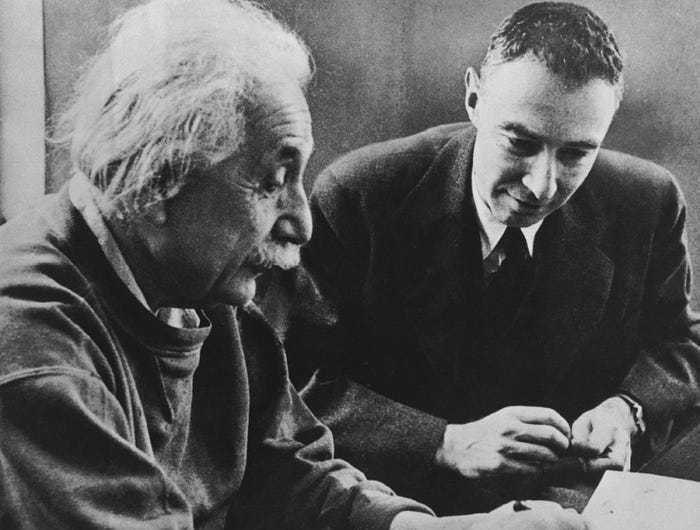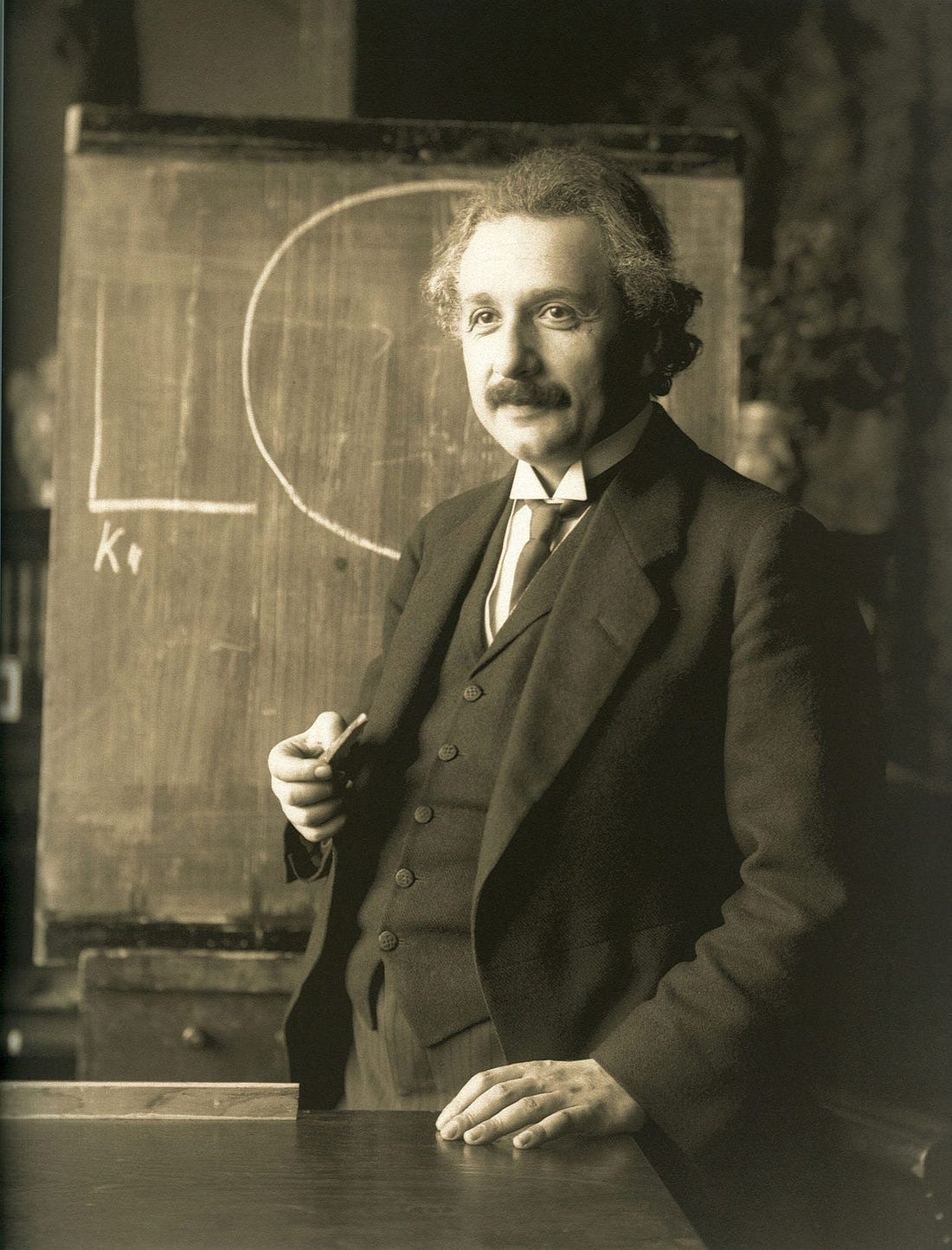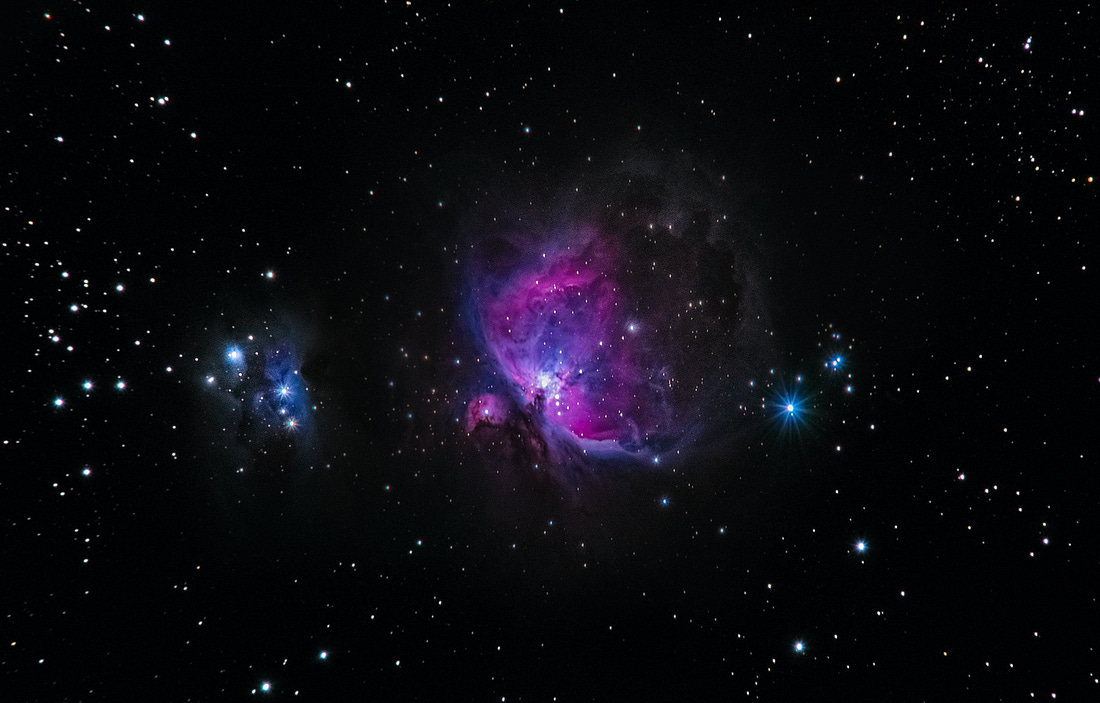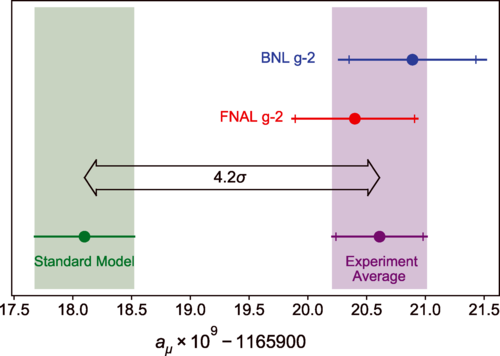The Story Of Einstein & Dark Energy — And The Latest Findings Of DESI & The Muon g2 ExperimentFrom Einstein to the 21st century & recent findings — here’s everything on dark energy up until present dayThe Story“Your mathematics is correct but your physics is abominable”, it was 1927 and Albert Einstein reacted by saying this to Belgian physicist Georges Lemaitre’s presentation. Lemaitre informed Einstein that his work on General Relativity had led to a dramatic rewriting of the story of creation. Lemaitre who would later be known as the ‘Father Of The Big Bang’ put forth a theory in which the universe began as a tiny speck (a singularity) of astounding density called the ‘Primeval Atom’ which expanded and swelled over the vastness of time into our cosmos. Einstein rejected these claims. It wasn’t the first time someone had suggested this idea to him. In 1921, Alexander Friedmann came up with multiple solutions to Einstein’s equations in which space would stretch, causing the universe to expand. Einstein baulked at this. But Einstein was wrong and he would retract later. Einstein was brilliant no doubt, but he refused to be mathematics’ pawn. He bucked the equations in favour of his intuition about how the cosmos ‘should’ be. His deep-seated belief that the universe was fixed and unchanging could not be simply replaced by Lemaitre’s expanding universe. Einstein had breathed new life into spacetime. He proved that space and time both curve(known as spacetime curvature). He proved that warps in space and time don’t need a facilitator since they ‘are’ gravity. Space is three-dimensional so when it warps, it warps all around an object not just underneath it. Before Einstein, gravity was a mysterious force that one body somehow exerted across space on another. After Einstein, gravity was recognized as a distortion of the environment caused by one object and guiding the motion of others. Einstein spent years developing this idea into a rigorous mathematical framework and the resulting Einstein Field Equations, the heart of his general theory of relativity, tell us precisely how space and time will curve as a result of a given quantity of matter (More precisely matter and energy; E=mc²). This theory then shows how such spacetime curvature affects the motion of anything — a star, a planet, a comet or light itself — moving through it. This helps physicists to make detailed predictions of cosmic motion. Evidence to support it came quickly, in 1915 Einstein used his equations to calculate Mercury’s trajectory and explain it. Then, in 1919 Arthur Eddington and his collaborators showed that distant starlight passing by the sun on its way to Earth followed a curved path, just like general relativity had predicted. Einstein was heralded as the world’s newfound scientific genius. In 2003, the Cassini-Huygens spacecraft(which was used for studying the trajectory of radiowaves that passed near the sun) showed that the curved spacetime model was in fact correct. This theory has truly come of age nowadays. Even the GPS systems that we carry in our pockets in our smartphones communicate with satellites whose internal timing devices routinely take account of the spacetime curvature they experience from their orbit above the earth. If satellites didn’t do this we would get inaccurate displays of our positions. What started out as a set of equations in 1916 are now in our pocket, a century on! However, Einstein while studying his equations again, found something unexpected and, to him, unacceptable. The main scientific and philosophical stance was not only that on the largest of scales the universe was uniform, but that it was also unchanging. However, the math showed that the density of matter and energy cannot be constant put through time. Either the density grows or it diminishes, but can’t stay put. Einstein recoiled. According to the math, the universe on the grandest of scales would be changing. The eternal static cosmos that Einstein expected emerged from his equations as simply not there. On the third line of general relativity, a particular intrinsic feature of spacetime relevant to gravity i.e. the amount of energy stitched into the very fabric of space itself was prevalent. Just as every cubic meter of water contains a certain amount of energy, every cubic meter of space contains energy as well, summarized by a number on the third line. He took a good look at that third line and when general relativity wasn’t adhering to a static universe, Einstein changed the mathematics. If instead of a zero he entered a positive number endowing spatial energy as a positive value. Every region of space would push away from each other, producing what most physicists thought impossible: repulsive gravity. He found that if he precisely adjusted the number, the repulsive gravitational force produced across the universe would exactly balance the usual attractive gravitational force generated by matter inhabiting space — giving rise to a static universe. He called this the cosmological constant. And it best described what he and others expected about the uniform, unchanging universe. Imagine an infinite flat rubber surface(the universe) stretching in all directions, then if you sprinkle glitter on it (the planets, galaxies and stars). Then you would find that the more it stretches the more the glitter particles move away from each other. Coming back to 1927, Lemaitre approached Einstein with his result that general relativity gave rise to a new cosmological paradigm in which space would expand. However, after changing the mathematics and dismissing Friedmann’s similar claims Einstein had little patience for this. But then in 1929, using the world’s largest telescope, American astronomer Edwin Hubble gathered evidence that the distant galaxies were all rushing away from the Milky Way. The photons that Hubble examined travelled back to Earth with a clear message — The universe is not static. It is in fact expanding. Einstein’s reason for introducing the cosmological constant was unfounded. The Big Bang model that described the universe as a cosmos that began enormously compressed and continuously expanding has from then on become widely heralded as the scientific story of creation. Lemaitre and Freidmann were finally vindicated. While Einstein was left wishing that he never meddled with the third line. The mathematics showed that the so-called critical density contained “just the right amount of matter” (Critical density = 2 x 10^-29 grams per cubic centimeter) or about six hydrogen atoms per cubic centimeter. But In 1998, something remarkable happened. Through some observations and a chain of reasoning, astronomers realised that they had been leaving out an essential component out of the tally of average density — they had observed that the average density of space was on the low side about 27 percent of the critical density, which was about only two hydrogen atoms per cubic centimeter. They found or rather observed a diffuse energy that appeared to be spread uniformly throughout space. The data shocked everybody. There was an energy suffusing space! Which sounded a lot like the cosmological constant that Einstein had theorized and then retracted eight decades later. Could those observations resurrect the cosmological constant from the dead? Nobody knew for sure. But it seemed to hold good. Scientists came up with a name for this diffuse energy, calling it “dark energy” because the energy does not give off light. Dark energy also repels gravity — just like Einstein’s theorisation. Furthermore, “dark” also describes the many gaps in our understanding of it. Nobody can explain dark energy’s origin, fundamental composition, or detailed properties. But what is even more remarkable is that the measurements of the estimated dark energy in space, made so far contribute to approximately 73 percent of the critical density. Which when added to the 27 per cent already measured brings the total critical density up to 100 per cent just the right amount for a universe with zero curvature. Much like the infinite rubber flat rubber table. In Big Think’s article on dark energy they suggest: “The way this dark energy behaves is identical to how we’d expect either a cosmological constant (in General Relativity) or the zero-point energy of space (in Quantum Field Theory) to behave.” While Quanta’s recent article state: “Since 1998, we’ve known that the expansion of the universe is accelerating. Dark energy is the name given to the accelerant. In the standard theoretical model of the cosmos, dark energy has a simple form: It is spread uniformly in space, maintaining a constant density at all times. Dark energy of this type, known as the cosmological constant, would not get diluted as the universe expands. Rather, as space grows, the amount of dark energy grows with it. And so this accumulating energy expands the universe with ever-increasing gusto.” So Einstein’s cosmological constant was resurrected from the dead, which seemed to explain what dark energy is. As it stands, the cosmological constant remains the most widely accepted explanation for dark energy, as it’s consistent with current observations and the Lambda-CDM model, which is the standard model of cosmology. Dark Energy In 2025 As Per The DESI Findings & The Muon g2 ExperimentHowever, recent news, as explored in this article by Scientific American, states that dark energy has been detected to be weakening as per recent observations.
As per this latest finding, this weakening of dark energy can also be explained by a theory proposed in 1995. One popular alternative theory to describe this weakening of dark energy proposed by Joshua A. Freiman in 1995 is “thawing” or “slowly rolling” dark energy & its effects uphold the cosmological constant. “Slowly rolling dark energy” can be compared to a ball rolling down a U-shaped valley (or in my head a skateboard ramp). After it’s released, (i.e. after the Big Bang) it rolls down one side & up the other side & keeps oscillating back and forth. This “slow rolling” theory fits within the cosmological constant model. As Scientific American state:
You can also read Quanta Magazine’s article on the recent discovery. Dark energy remains a mystery, but there’s also the recent muon-g2 experiment that took place at the Fermi lab in Chicago that suggests that there could be other particles & forces at play which we haven’t discovered yet, as ‘far out’ as that sounds. The graph of the muon g2 experiment showed a clear discrepancy between the observed value of the experiment and the results predicted by the standard model. Could the muon g2 experiment be the key to unlocking our understanding of dark energy? It’s uncertain at the moment. I explored the muon g2 experiment & dark energy in detail in an old post linked below, if you’re interested in checking that out! It’s surely an exciting time in theoretical and particle physics. We could be edging that bit closer to understanding dark energy & perhaps be on the cusp of discovering new particles and who knows, new forces too! If the muon g2 experiment can hit a probabilistic measurement of one in 3.5 million as compared to one in 40,000 as it has been currently, it could pave the way for more groundbreaking discoveries — some that could change the very fabric of the standard model. We’re perhaps slowly edging closer to The Theory Of Everything. Will we find it? Maybe, or maybe not. But it’s still worth looking up into the vastness of the cosmos & trying to understand our place in this seemingly infinite space of possibilities. Thank you for being a valuable subscriber to my newsletter Light Years! If you liked this post & found it informative, feel free to share this publication with your network by clicking the button below… I hope you found this post informative & it helped you in some way. As always, feel free to subscribe to my publication Light Years & support it & also share it if you’d like. Get it in your inbox by filling up the space below! If you’d like to thank me for this post, if you found value in it, you can buy me a coffee instead of, or alongside subscribing to my publications, by scanning the QR code below so that I can sip my next brew of coffee, all thanks to you! :) You're currently a free subscriber to Light Years by Gaurav Krishnan. For the full experience, upgrade your subscription. |
Friday, 21 February 2025
The Story Of Einstein & Dark Energy — And The Latest Findings Of DESI & The Muon g2 Experiment
Subscribe to:
Post Comments (Atom)
A Better Place - Fresh Manna by Pastor Tim Burt
Fresh Manna with Pastor Tim Burt A Note from Pastor Tim Tim here. I'm so glad you...

-
A Note from Tim Tim here. I'm so glad you're part of this journey. Below, you'll find today...






No comments:
Post a Comment